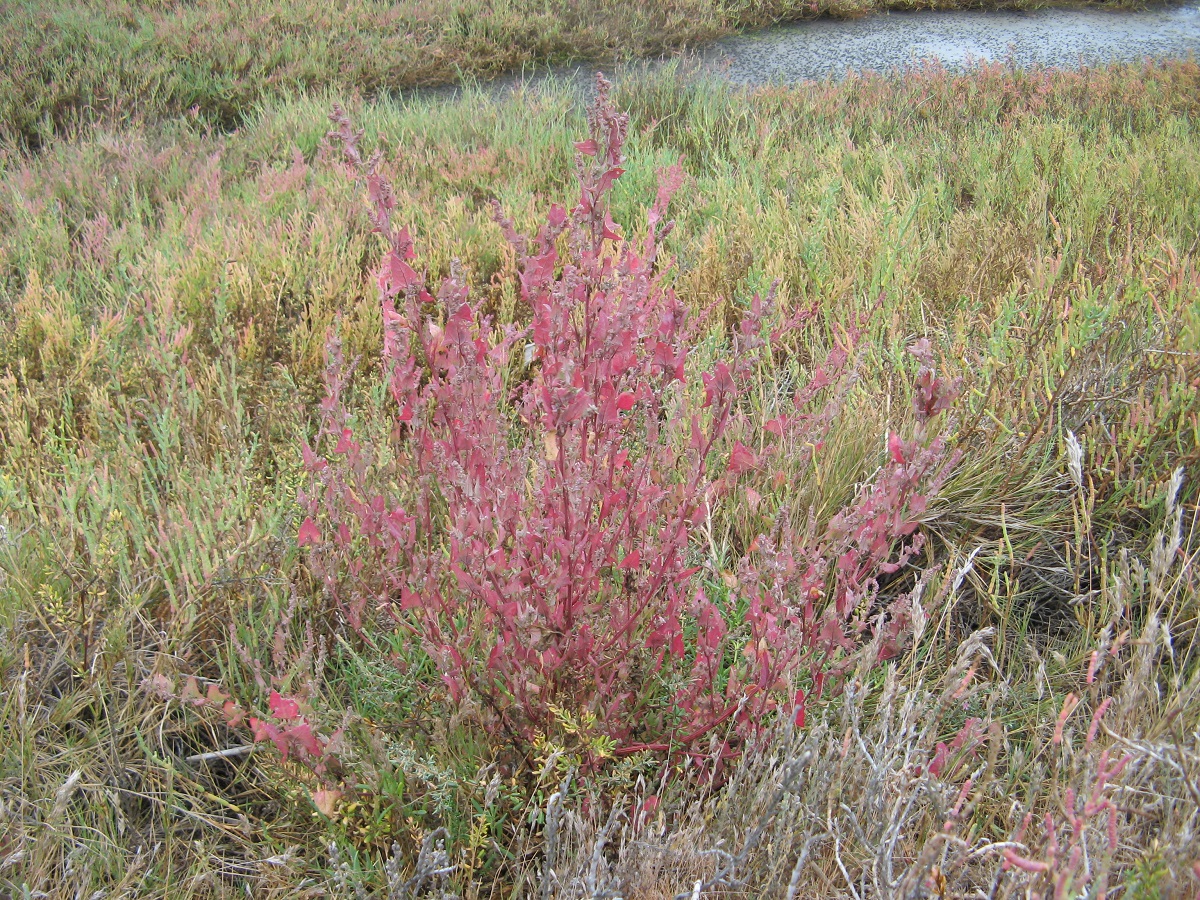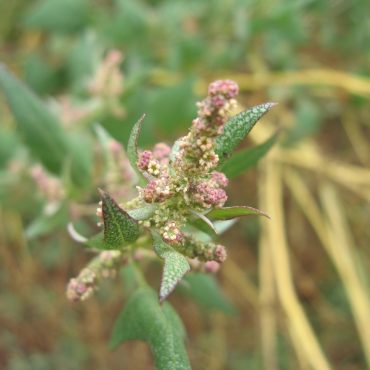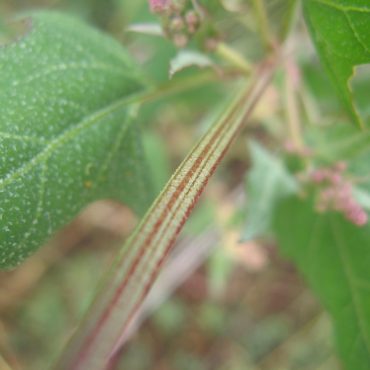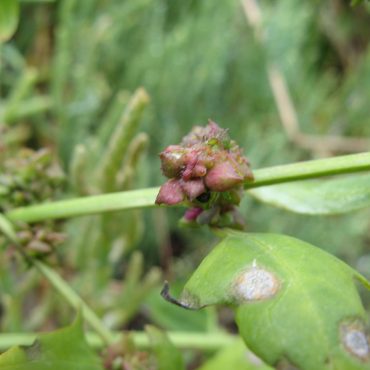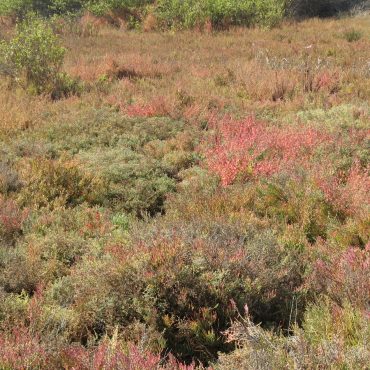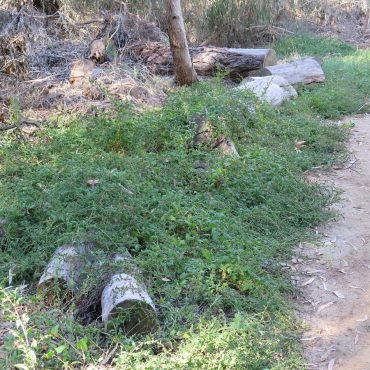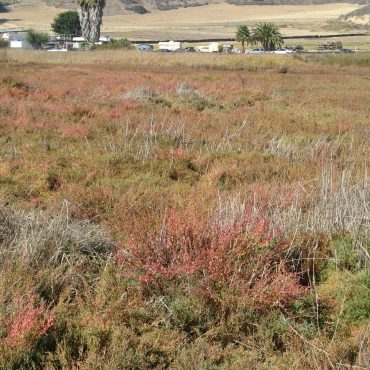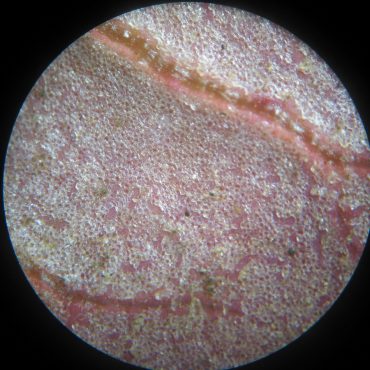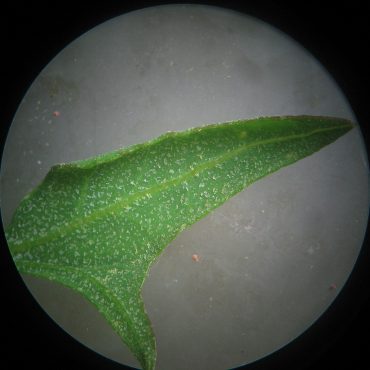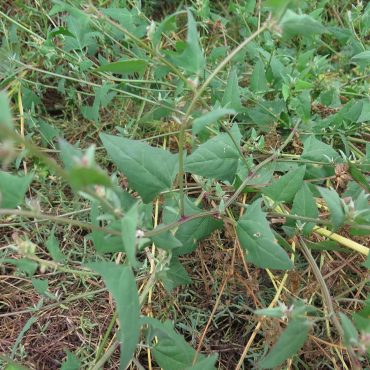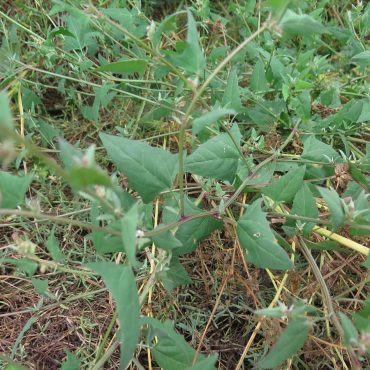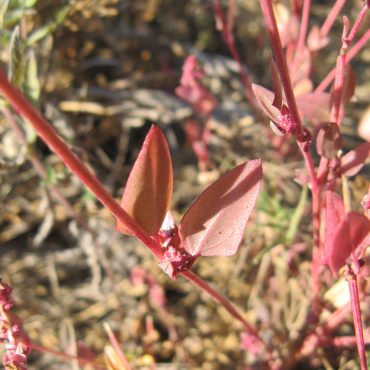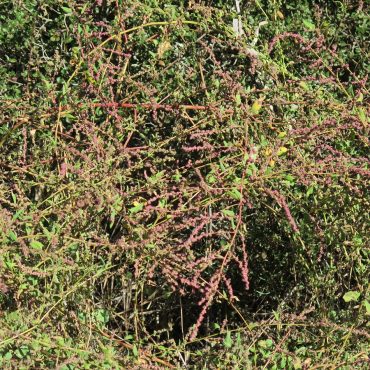Description
4,26,34
Fat hen is an herbaceous annual that produces one to several sprawling to weakly ascending basal stems up to a meter long. Stems are branching or not, angled or ridged, initially green, becoming striped with red before turning deep rose in fall.
Leaves are variable in size and shape. Larger (lower) leaves may be 3½ inches (9 cm) long and nearly as wide at the base; the upper (outer) leaves are smaller; many leaves are arrowhead-shaped (sagitate or hastate), but the smaller leaves are sometimes narrowly to widely triangular or lanceolate. The leaf petiole is shorter than the leaf. Leaf margins are smooth or irregularly toothed. Leaves are green, sometimes edged with red and turning golden to deep rose in the fall. The young growth of both stems and leaves are covered with specialized hairs (bladder hairs or salt hairs, further discussed under Ecology), highly modified hairs that excrete salt. These give the leaf a silvery sheen when young and a rough, scaly texture as the leaf ages.
Flowers occur in discontinuous clusters along branching spikes at the stem ends. The lower flower clusters are interspersed with small leaf-like bracts. The individual flowers are tiny and either male or female, with both occurring on the same plant, usually, but not always, in separate clusters. Male flowers are radially symmetrical, less than 1/16 inch (0.1cm) across. There are no petals and the calyx forms an open bowl with five, triangular lobes that curve inward; the calyx is reddish in the bud, becoming green on flowering. The pistil is absent; there are five stamens, with bilobed anthers with yellow pollen. The female flower consists only of a single pistil which is fully enclosed by two slightly unequal, ovate, leaf-like bracts that are joined at the base and that give the structure a flattened, asymmetrical shape, somewhat like a sunflower seed less than 1/8 inch (mm) long. The pistil has a one-chambered ovary with a two-branched style. Fat hen blooms from June to November.7
The fruit develops within the pair of enclosing bracts. The entire structure enlarges to about 1/4 inch (0.5 – 0.6 cm) becoming deep pink to dark brown. The shape is distorted by irregular tubercles that develop at the base of bracts. There is one seed per fruit, but the fruits produce seeds of two types: brown seeds greater than 1/16 inch (0.15 – 0.25 cm) wide and smaller black seeds. The size differences may reflect different germination times.305

